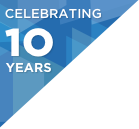Presentation: Successful Go program design, 6 years on
Location:
- Mountbatten, 6th flr.
Duration
Day of week:
- Wednesday
Key Takeaways
- Hear recommendations on patterns and best practices for developing successful, scalable, and sustainable code using Go.
- See a microservice built from the ground up with Go and understand what it capabilities are.
- Learn what the capabilities of Go are and how it can be used for great effect.
Abstract
Go has emerged from its infancy, and is now one of the preëminent languages in the server, microservice, and infrastructure space. This talk collects lessons learned from 6 years of professional Go development, highlighting the idioms, design patterns, and practices that have proven themselves at scale — and many that haven't. Attendees will leave with a stronger understanding of what good Go code looks like, and with strategies to improve their own Go projects.
Interview
Peter Bourgon Elsewhere
Similar Talks
Tracks
Covering innovative topics
Monday, 7 March
-
Back to Java
What to expect in Java 9 and Spring 5
-
Stream Processing @ Scale
Big data, fast-moving data. Practical implementation lessons on Real-time Data
-
DevOps & CI/CD
Lessons/stories on optimizing the deployment pipeline
-
Head-to-Tail Functional Languages
Free-range Monads, Tackling immutability, tales from production, and more...
-
Architecting for Failure
Your system will fail. Take control before it takes you with it
-
21st Century Culture from Geeks on the Ground
New ways to organise technology companies and workplace culture
Tuesday, 8 March
-
Architectures You've Always Wondered about
In-depth technical case studies from giants like: Microsoft, Netflix, Google, Twitter, and more...
-
Close to the Metal
Get efficiency back into your code, concepts like: cache efficient algorithm and lock free data structures
-
Containers (in production)
Real-world lessons on scalability and reliability in production container deployments
-
Modern CS in the real world
Real-world Industry adoption of modern CS ideas
-
Security, Incident Response & Fraud Detection
Master-level classes on building security into your system and responding to incidents when things go wrong.
-
Optimizing You
Keeping life in balance is always a challenge. Learning lifehacks
Wednesday, 9 March
-
Disrupting Finance
Technology advances in finance (blockchain, P2P, Machine Learning, API's)
-
Modern Native Languages
Modern native languages: Safe efficiency with Go, Rust, Swift
-
Full Stack Javascript
Level up Javascript with topics like Angular, React/ReactNative, Node, Mongo/Couch/Other, Falcor, GraphQL, etc
-
Data Science & Machine Learning Methods
A developer's data science and machine learning toolkit
-
Microservices for Mega-Architectures
Practical lessons on Microservices success.
-
Modern Agile Development
Revisiting Agile today and tackling challenges we are seeing in the wild




